Those who need assistance may include disabled people, young children, the elderly, frail or someone with a temporary condition which might hinder their escape (e.g. broken leg). The reason they need assistance could be they are unable to use the stairs, hear the fire alarm or move quickly enough. Some people (for example children or people with learning difficulties) may not fully understand the rules for evacuation.
All of these people are likely to need special arrangements to help them in emergencies, arrangements which should be described in a Personal Emergency Evacuation Plan (PEEP). Local fire wardens may need to play a role in PEEPs.
Well thought through PEEPs are important in making our workplaces safe for everybody and demonstrate our commitment to improving accessibility.
What Can Go Wrong?
- Person unable to escape or escape is delayed.
Legal/91热爆 Requirements
- The 91热爆 is responsible for making sure its staff and visitors can be evacuated effectively from a building in an emergency.
- No one should be left in a building awaiting rescue by the fire brigade - Unless explicitly agreed in advance you must not rely on security staff or the Fire Brigade to assist with evacuation.
- Managers must draw up PEEPs for their staff and any visitors they are responsible for who require assistance to evacuate.
- Equality act – ensuring people can escape may require “reasonable adjustments to the building”.
- A person must not be allowed to work in any part of a building from which they can’t be evacuated.
- Most lifts must not be used in an emergency. A few buildings have special lifts which may be used.
Control Measures
Types of PEEP
- There are two types of PEEP form
- For a person who regularly works in a building i.e staff or freelancer, their manager uses the ‘ Staff PEEP’ form to develop and record the PEEP. The completed PEEP form must be approved, communicated; and updated annually.
- For a person who is a visitor, works in the building for just a short time, only has a temporary issue or is a contributor. The Host uses the ‘Visitor PEEP’ Form.
- The Visitor PEEP form can also be used for joint evacuation arrangements for a group, as long as all their evacuation needs are catered for.
Building Evacuation Facilities & Arrangements
- Before creating a PEEP a Manager or Host should ask the Facilities Manager (FM) what special facilities the building has. This might include:
- Pager System (eg “Deaf Alerter”) gives a vibrating or text alert if there is an alarm.
- Evacuation lifts - some are also configured for self-evacuation.
- Evacuation chairs, aka EVAC chairs.
- Flashing beacons as well as sounders.
- Also find out about the evacuation routes and fire alarm zones, where applicable in some buildings
Step by Step Guide - Staff PEEP
- Discuss with member of staff what help they might need – not all disabled people need help - whilst some people who are not disabled might.
- For example are they unable to easily use stairs.
- Or be unable to see fire safety signs, have difficulty finding their way around or be unable to hear the fire alarm.
- They could be likely to become easily confused or disoriented in emergency situations.
- Identify who will assist in providing that help and agree with them that they will help – don’t rely on one or two people – they may be on leave or in meetings.
- Write up the plan in conjunction with the staff member.
- If you cannot create a plan which you are confident will always work, then you must identify alternative working arrangements.
- This might mean, for example they work only on Ground Floor, or somewhere where egress is easier.
- They might temporarily work in a different location or at home.
- Ensure people who require help, as detailed in their PEEP, do not work on their own.
- If it’s for a member of staff then review the form with the Facilities Manager for the building. Both manager and FM should sign the form to indicate they are satisfied that the plan is complete and workable. The member of staff should then sign the form to indicate that they familiar with the plan. Email the document to “91热爆 HR” using ‘PEEP form’ in the title of the email , but please do not do this for visitor PEEPs.
- If you need advice on the content of your PEEP, please contact your Safety Adviser or the Safety Advice Line.
- Make sure everyone knows what part they play in the PEEP
- Arrange for training of colleagues – you can ask your Safety Adviser or the Safety Advice Line for advice on what training they might need. Consider training the person who needs assistance too – it will give them confidence and make them more able to enlist help if named helpers are not around.
- The line manager should test the plan by requesting an initial evacuation rehearsal with the local building Facilities Manager.
- Review it if anything changes and at least once a year.
- When staff visit venues outside the control of the 91热爆, the line manager must ensure that the venue’s management are aware of the individual’s needs and should request a temporary local Visitors PEEP be drawn up by them, the details of which will be passed on to the individual concerned.
Step by Step Guide - Visitors PEEP
- For visitors to 91热爆 buildings the host is usually a 91热爆 member of staff.
- Where possible gather information regarding the visitor’s special requirements before the visit and discuss with the buildings Facilities Manager. This is particularly important when several visitors are due to attend a building that all require assistance, such as a course, an audience or event. See Groups and Audiences.
- Visitor PEEP forms are available from Reception staff or via the link on this page.
- A copy of the visitor’s PEEP should be given to reception and if possible, a copy should be sent to the building Facilities Manager.
- Upon arrival the visitor and any carers or helpers will be given a copy of the PEEP by the host and appraised of any special arrangements that have been put in place, including access & egress routes.
- The 91热爆 host or their manager should keep a copy of the visitor PEEP for 6 months.
- Approval by the building Facilities Manager is not required for a visitor’s PEEP.
Arrangements for groups of visitors and audiences
- Try to find out in advance if there are people who might need help, but be aware that you may not be able to.
- Where a group of people (such as people on a tour or an audience) might include more than one person who needs help develop a plan which works for them all.
- For example: “How would we evacuate several people all in wheelchairs?”
- “How would we evacuate an audience with many frail or elderly people?”
- A visitors PEEP form might not be the best way to record this – build the plan into your risk assessment or event plan.
Division Specific Issues
91热爆 Safety
- Talk through with you possible alternatives if you can’t work out an effective PEEP
- Report to the Executive on the effectiveness of emergency planning
Facilities Managers
- Review the PEEP with the line manager to ensure it is effective for a particular building
- Advise on the special facilities which the building has
- Provide vibrating alerters
Audience Services
- Develop evacuation plans for audiences and visitor tours
91热爆 HR
- Keep a record of PEEPs which they have been told about
- Reminds the line manager and the member of staff when the PEEP needs revising
FAQs/Did You Know?
- 2% of the UK working age population becomes disabled every year.
- There are approximately 10 million disabled people in Great Britain who are covered by the Equality Act 2010. This represents around 18% of the population.
- The Data Protection Act 2018 places duties on employers to ensure confidential and appropriate handling of ‘sensitive personal data’, which includes data about a person’s health. It also gives individuals the right to see personal data and information held or processed about them, provided they request it in writing.
Useful documents
-
-
-
Meeting access requirements for contributors and Audiences
Recommended links
Fire topics
-
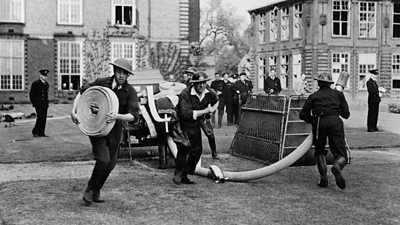 Building Fire Manual Sets out the recommended contents of a building fire manual to be kept in each premises.
Building Fire Manual Sets out the recommended contents of a building fire manual to be kept in each premises. -
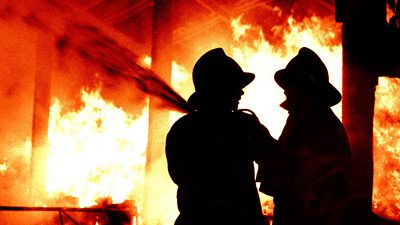 Fires - Buildings and Bushfires A guide to deployments of journalists and crew to large building fires and bushfires.
Fires - Buildings and Bushfires A guide to deployments of journalists and crew to large building fires and bushfires. -
 Fire Precautions for Studios Guideline describing the main fire safety issues to consider when working in studios, including fire treating of sets, audience seating, cooking risks and smoking on set.
Fire Precautions for Studios Guideline describing the main fire safety issues to consider when working in studios, including fire treating of sets, audience seating, cooking risks and smoking on set. -
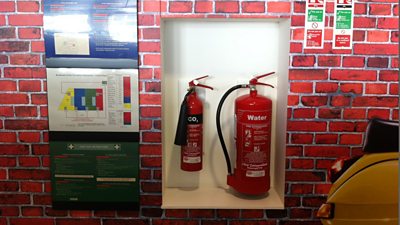 Fire Prevention Principles The most important element of Fire Safety is fire prevention
Fire Prevention Principles The most important element of Fire Safety is fire prevention -
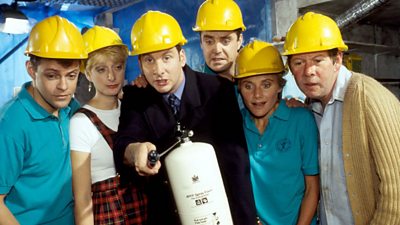 Fire Safety in 91热爆 Buildings A summary of the way that fire safety is managed in 91热爆 Buildings and the individual鈥檚 role in the management of fire.
Fire Safety in 91热爆 Buildings A summary of the way that fire safety is managed in 91热爆 Buildings and the individual鈥檚 role in the management of fire. -
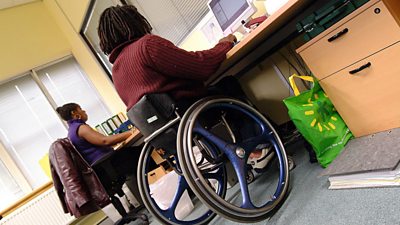 Personal Emergency Evacuation Plan (PEEP) Guideline describing the measures to take to ensure those who need it can get assistance to evacuate a premises during a fire or other emergency.
Personal Emergency Evacuation Plan (PEEP) Guideline describing the measures to take to ensure those who need it can get assistance to evacuate a premises during a fire or other emergency.
More from SSR
-
Your platform to record accidents, risk assessments, assurance monitoring and inspections
-
Safety Equipment Stores Just one number to call: 0844 800 8875
-
91热爆 Safety Guidelines An A-Z of 91热爆's Health and Safety Guidelines
-
Safety Advice Line: 0370 411 0464 Email: safety@bbc.co.uk
Events guidance - key links:
- Exhibitions
- General Guidance
- Indoor Location Recce Checklist
- Outdoor Location Recce Checklist
- Major Incidents & Emergency Planning
- Marketing and Promotional
- Noise Exposure
- Planning and Management
- Responsibilities
- Responsibilities Form
- Laser Lighting Effects
- Strobe Lighting
- Temporary Stages and Rostra
Health topics - key links:
- (91热爆 network only)
- Contributors Fitness to Participate
- Display Screen Equipment (DSE)
- (91热爆 network only)
- First Aid and Welfare on Location
- International Travel - Risks & Health
- Manual Handling
- Mental Health: 91热爆page
- (91热爆 network only)
- Personal Health and Wellbeing
- Pregnancy
- Psychological Trauma Support & Trauma Risk Management (TRiM)
- Tiredness and Fatigue
- Travel Health Contacts
91热爆 High Risk - key links:
- CBRN and Industrial Spills
- Covert Filming
- Crisis Management and Security Support
- Demonstrations, Protests and Crowds
- Disaster Coverage
- Door Stepping
- (91热爆 network only)
- (91热爆 network only)
- Public Order
- Safety Equipment Stores
91热爆 Journalism - key links:
91热爆 Productions - key links:
- Aerial Filming and Airfields
- Animals: Displaying and handling for performance
- Boats: Working on
- Children and Young People
- Driving
- Electrical Equipment and Systems
- First Aid and Welfare on Location
- Food Safety (Cooking and Catering)
- Remote Location Working
- Roads and Streets: Working by
- Security of Productions on Location
- Stunts
- Tiredness and Fatigue
- Unmanned Aerial Systems (UAS aka Drones)
- Vehicles: Recording in, from and around
- Working at Height: Mobile Elevating Work Platforms
- Working at Height: Tower Scaffolds
91热爆 Radio - key links:
- (91热爆 Network only)
91热爆 Security - key links:
91热爆 Sport - key links:
About this site
This site describes what the 91热爆 does in relation to managing its health, safety and security risks and is intended for those who work directly for the 91热爆.
It is not intended to provide instruction or guidance on how third parties should manage their risks. The 91热爆 cannot be held liable for how this information is interpreted or used by third parties, nor provide any assurance that adopting it would provide any measure of legal compliance. More information
Some links on this site are only accessible when connected to the 91热爆 network
